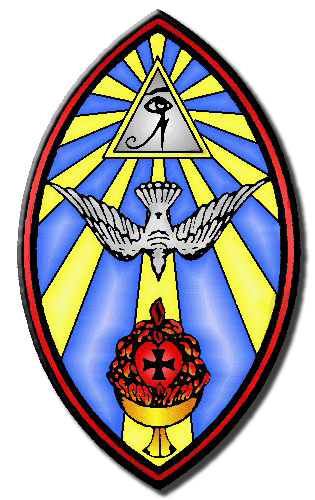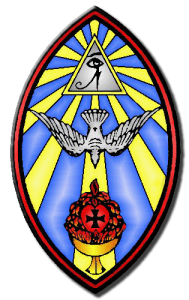The following is part V of a paper submitted by Frater Entelecheia is a member of Horizon O.T.O. in Seattle, Washington entitled: “A Pattern of Trust: Building a Thelemic Lodge Culture.” There’s a lot of food for thought here!
Do what thou wilt shall be the whole of the Law.
The trust we have with current and prospective members is our most valuable asset. As I’ve claimed previously, we build trust by demonstrating our commitment to our Higher Cause through our words and through our deeds. According to our Supreme and Holy King, that Higher Cause is, broadly speaking, “to collectively approach, encounter, and magnify the Divine … through our shared Fraternal bonds … [and] through the sacred rituals that we work together.”
The Pattern of Building Trust
Step Five: Membership
Individual Perspective: The individual was impressed enough by their initiation experience and by their experiences of the Lodge in general that they have decided to become a member. They support the work of the Lodge with regular payment of dues.
Lodge Perspective: We have proven to the initiate over the course of many experiences, large and small, that we believe what they believe. We’ve proven this with our words and with our deeds. We’ve proven it through the way we conduct rituals and initiations. We’ve proven it through the way we handle inevitable personal conflict. We’ve proven that we are in it for our Higher Cause, not just for ourselves. Therefore it becomes the most natural thing in the world for the individual who shares those values to support us.
Measure of Success: Success at Step Five is measured by how many member you have who pay dues regularly. This is closely related to member retention.
Comment: Your number of dues paying members is a good measure of your success at all preceding steps. This number should grow over time. If it’s not, that’s either because you’re not bringing in enough new people (problems at Steps One & Two), or you have high turnover (probably a problem at Step Three).
We’ve all heard stories of Lodges going through growth spurts only to fall back to previous levels with a change in master. Adding members is relatively easy. Retention is the difficult part. But working diligently to improve one’s skills at each of these steps should not only add members; it should also transform your Lodge’s culture into one capable of steadily adding members. This is because each of these steps helps to add members by building trust within the organization and outside of it.
It’s easy to overestimate the importance of finances, especially since so many Lodges struggle for funds. But I liken it to having a headache. When you have a headache, all you can think about is your head, but as soon as the headache goes away, you forget you have a head at all. Money is the same way. Your members usually don’t care about it unless something is going wrong. So being in the black each year is more a sign of good financial management than a sign that you’re building trust per se.
Nonetheless, your members are going to trust you more if you use the money they give you wisely. If you have a healthy base of dues-paying members, and yet you are having frequent financial crises, that will erode trust. On the other hand, if you’re hoarding that money and not putting it to good use, that could also erode trust. Use your money to expand the scope of your core ritual work and promulgation: replace old or worn out ritual equipment, perform frequent temple upgrades, create professional literature, show up at more outside events, etc. That will communicate to your members that their money is used to improve the way the Lodge initiates the community into Thelema, thereby building trust.
Culture as Communication
The entire Lodge is a means by which we communicate inwardly and outwardly our commitment to something larger than any of us individually. This is why we must be able to put into words that Higher Cause that we serve, translate it into actions each and every one of us must take to serve it, and keep one another accountable to that cause – every day in everything we say and do.
This has the effect not only of uncovering our light so that likeminded individuals may be drawn to us; it can also potentially protect us from accidents. If you build a Lodge culture around the mastery of the activities enumerated here, it will not be so easy for a single unfortunate event or series of events to derail that growth. Rather than going through ups-and-downs of membership, it will be possible to sustain growth over the long-run, because it will always be clear what the Lodge stands for.
I believe the ability to attract and to retain members depends upon our ability to clearly and consistently communicate our commitments. Individuals who share our beliefs must find us and find out what we believe. And when they find us, our actions must continually prove those commitments. The single most powerful tool we have to communicate is the Lodge itself. The way the Lodge presents itself outwardly to the community must make clear our beliefs. The way the Lodge is run internally must continue to reinforce that commitment if it is to retain members. It is my hope that the model I have provided here offers a framework to begin to analyze Lodge culture and to take steps toward making it a consistent engine of building trust.
Love is the law, love under will


